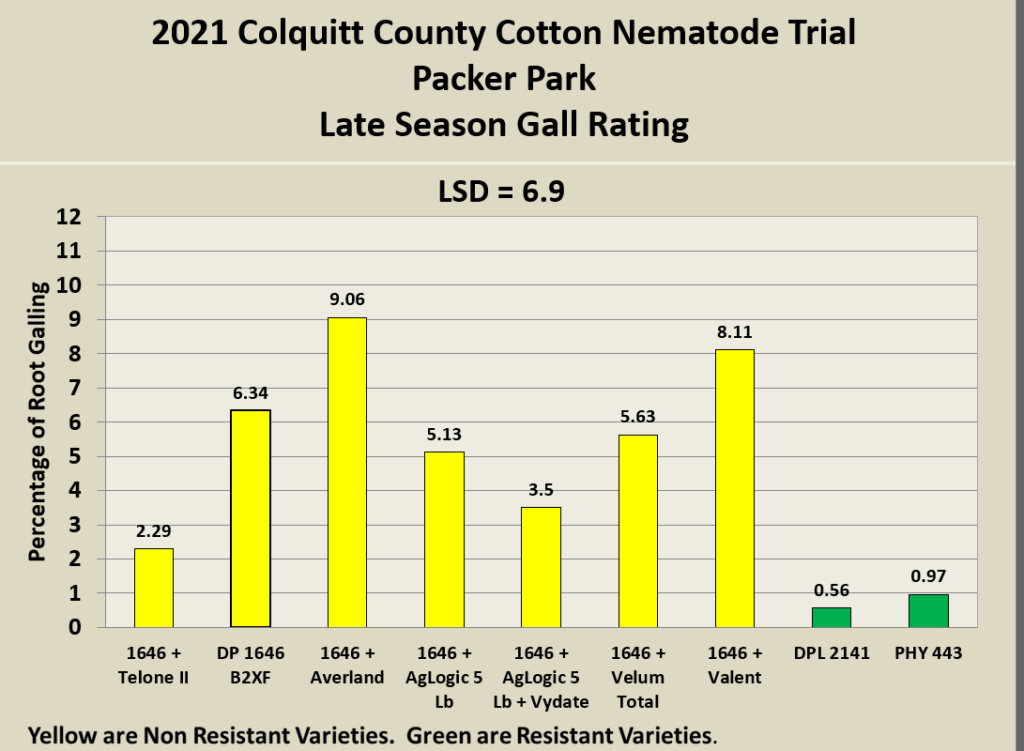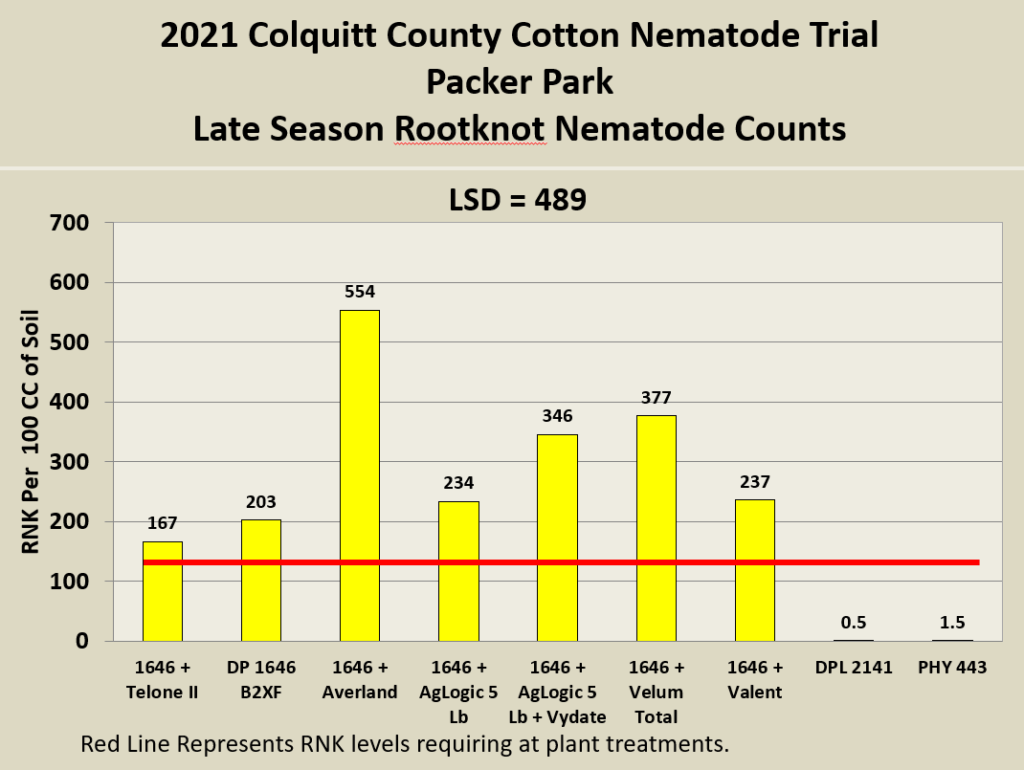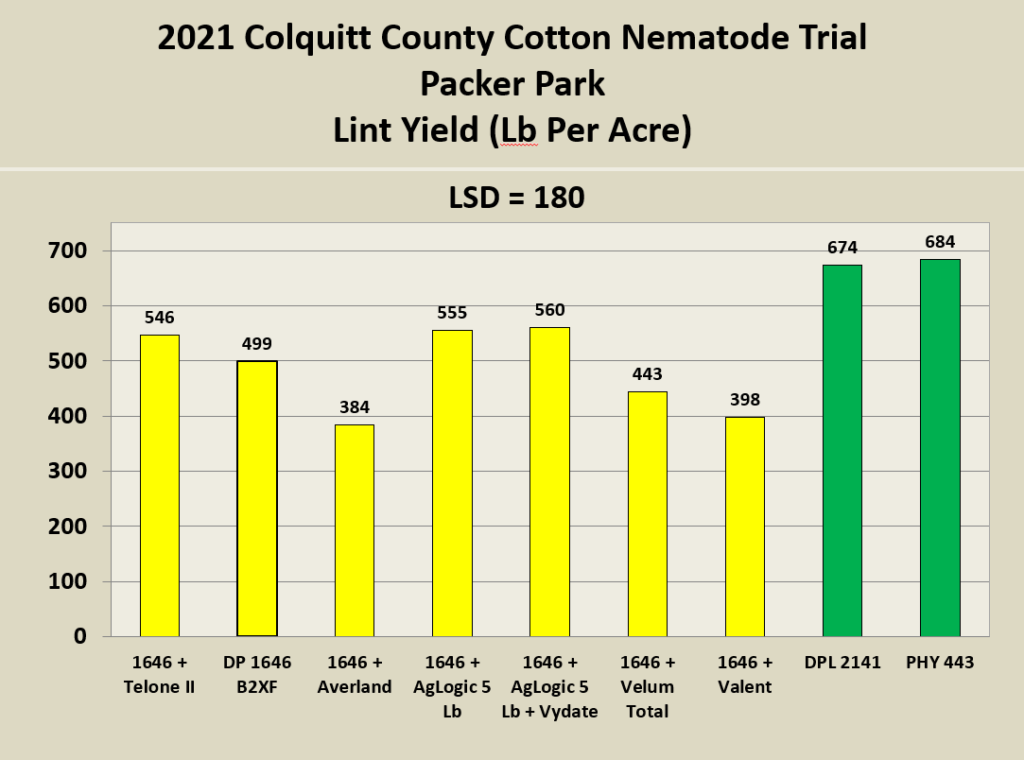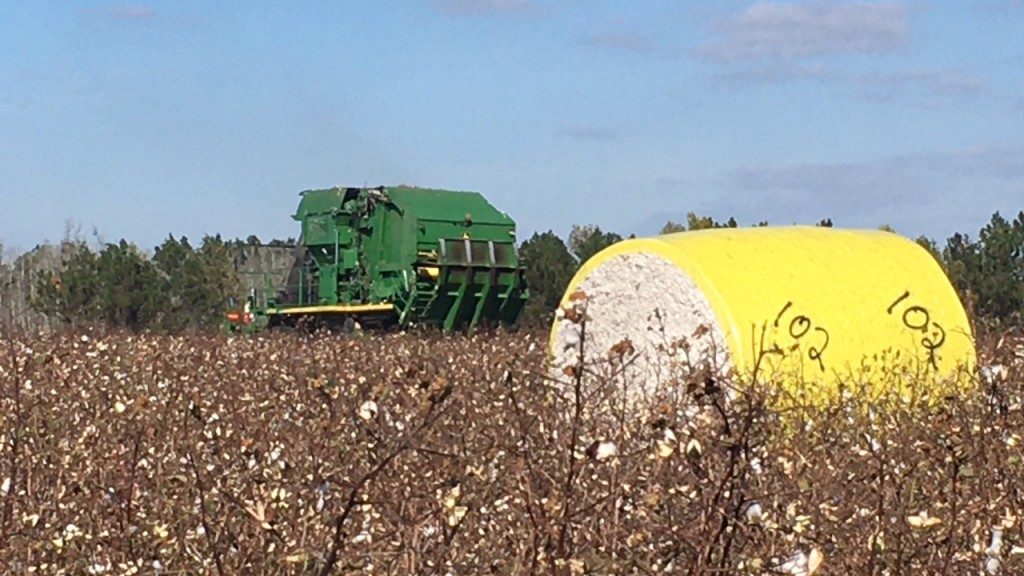An estimated 70 percent of Georgia’s cotton fields are infested with at least one species of potentially damaging plant-parasitic nematodes. In a statewide survey of cotton fields (nearly 1800 samples were collected) approximately 69 percent of the fields were infested with root-knot nematodes and 5 percent were infested with reniform nematodes. An effective tactic to manage either of these plant parasitic nematodes in cotton production is to plant resistant varieties. Cotton producers in Georgia have the opportunity to plant a number of different varieties that have resistance to the southern root-knot nematode, Meloidogyne incognita. As of 2021, growers now have the opportunity to plant cotton varieties with resistance to both M. incognita and Rotylenchus reniformis, the reniform nematode.
The objective of this study was to assess the performance of cotton varieties with resistance to plant-parasitic nematodes as compared to nematode-susceptible varieties planted with and without nematicides. The treatments included two nematode resistant varieties (DPL 2141, PHY 443) and various at plant treatments with a nematode susceptible cotton variety (DPL 1646). This plot was planted on June 3, 2021. Telone was applied the same day as planting. The Vydate application was 29 days after planting (DAT). Rainfall totals for Moultrie for the first two months: 8.11 inches (June 3, July 2, 2021), and 14.74 inches (July 3-August 3, 2021).

Below are the late season gall ratings from this project. End of season root-gall ratings for DP 2141 NR B3XF and PHY 443 W3FE (0.7 and 1.0, respectively) were numerically lower than were those for the DP 1646 B2XF/nematicide combinations (2.9-6.3).

The chart below shows the end of season root-knot nematode counts from all the treatments. The plots planted to either DP 2141 NR B3XF or PHY 443 W3FE were 0.5 and 1.5 J2/100cc, respectively, as compared to DP 1646 B2XF and nematicide combinations, which were all above threshold values (100 J2/100 cc soil).

Yields for DP 2141 NR B3XF and PHY 443 W3FE (674 and 684 lb lint/A, respectively) were numerically higher than were those for the DP 1646 B2XF/nematicide combinations (443-560 lb lint/A).

Below are comments by Dr. Bob Kemerait, UGA Plant Pathologist, on the nematode research at Packer Park and the value of this research to cotton growers not only in Colquitt County but also in the state.
“The field plot area located at Packer Park has become, over the past 5 years, the single most important site for assessing resistant cotton varieties in terms of root-damage, nematode increase, and yield versus high-yielding, popular susceptible varieties. Such non-biased, replicated data is essential to provide cotton growers in Georgia and throughout the southeastern United States with the information they need to realize the greatest success in their cotton production.
The field site at Packer Park is essential for the development of nematode management strategies because 1) ease of accessibility, 2) uniformity of nematode populations across the site (very difficult if not impossible to duplicate, and 3) opportunity to manage the site (to include center pivot irrigation) exactly as needed for such studies.
Results from studies conducted at Packer Park are presented at every grower meeting I attend, at consultant meetings, and at national meetings as well, The opportunity presented by continued work at Packer Park is unparalleled in in my 22 years of experience at UGA. Loss of this facility would be a major blow to cotton producers of the state and the region and to my research and Extension program. “
The research could not have been possible without the help and support from Mr. Gene Hart – Colquitt County Young Farmer Advisor, Bayer Crop Science, Valent, Telone, Aglogic, Phytogen and Corteva.
If you have any questions please contact your local county Extension agent.
